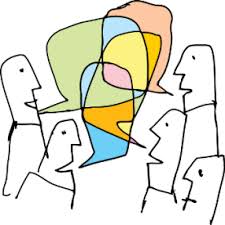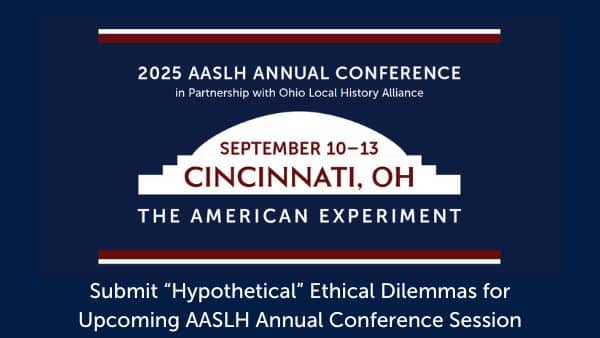Although it’s been months since AASLH’s 2013 Annual Meeting in Birmingham–which was wonderful–I continue to think about the sessions and workshops I attended. I was fortunate to join a full-day workshop called “Embracing Divergent Memories through Dialogue Design and Facilitation” led by Sarah Blannett Pharaon, Program Director at the International Coalition of Sites of Conscience. Sarah led our group in stimulating conversations about using dialogue as a tool for effective engagement and audience participation.
What is the International Coalition of Sites of Conscience?
For those unfamiliar with it, the Coalition is a worldwide network dedicated to transforming places that preserve the past into dynamic spaces that promote civic action. It consists of almost 200 sites in 54 countries, all of which are committed to designing participatory programs that bring people together across difference. The Coalition is a wonderful resource for educators and program developers, and I encourage you to learn more about what they do and consider becoming a member institution.
What were my expectations for the workshop?
I work for The Sixth Floor Museum at Dealey Plaza, and our mission is to interpret the assassination and legacy of John F. Kennedy. Almost every person who walks through our doors has a story about where they were when President Kennedy was killed, how they responded to news of his death, or what they believe about the Warren Commission’s findings. In other words, our guests come ready to dialogue (and I suspect that yours do, too)!
While we invite visitors to reflect on their visit by writing down their impressions in the memory books that conclude our permanent exhibit—and we encourage those with direct memories of President Kennedy and the 1960s to participate in our terrific Oral History Project—we do not offer guests many opportunities to engage directly with us or with one another “in the moment”. Like every museum, we survey our visitors after they’ve toured or attended a public program, but we have not consistently provided opportunities for them to simply talk to one another about what they think. By attending this workshop I was hoping to get smart about “facilitated dialogue” and how we might integrate it into what we do.
So, what’s the difference between conversation and dialogue, anyway?
One eureka moment I had during the session happened during an examination of the differences between conversation and dialogue. Admittedly, I hadn’t really thought about these terms in this way before! The distinction is related to purpose: a conversation is a sharing of information without any intended impact on the listener, whereas a dialogue is the sharing of ideas, experiences and assumptions for the purposes of personal and collective learning. Defining the terms really helped me understand that what we really strive for goes beyond just having people talk with one another. Our goal is to have our exhibits spark respectful dialogues that are relevant and meaningful to those involved.
What goes into “the arc of dialogue”?
Sarah patiently walked us through steps for setting the stage for effective dialogue, a phased approach that goes from opening to closing the conversation. They included:
1. Establishing the purpose for the group (what do you want to accomplish together?)
2. Setting guidelines for the conversation (e.g. withhold judgment and seek understanding; respect the group’s confidentiality; be willing to examine your own assumptions)
3. Sharing individual experiences with the topic
4. Exploring perspectives beyond your own
5. Synthesizing the learning experience (make meaning from the threads)
Allow me to point out that this sweet little list completely oversimplifies the process! Effective dialogue demands an skilled facilitator who can manage group dynamics, identify and correct when the group’s agreed-upon guidelines are being undermined, and to keep the group process what it has learned. At the conclusion of the conversation, it is hoped that participants will have a broader understanding of the topic and a clarity about their own thinking about how it.
The bulk of the workshop was spent modeling question strategies, testing sample activities and brainstorming how we might fold these new ideas into what we do at our individual sites. Lots of wonderful sharing about our hopes and our fears for wielding this powerful new weapon!! The workshop was a thoughtful way to jump start the conference and the concepts resonated with the other lectures and session I attended that week. How rewarding to hear from colleagues in Tunisia and South African and all over the world share their experiences tackling challenging history! I’ll be looking for opportunities to integrate facilitated dialogue into our programs and planning over the coming year.
Are you using facilitated dialogue at your site or institution? If so, what’s working? Is there one piece of advice you wish you’d had when you started that you’re willing to share now?





